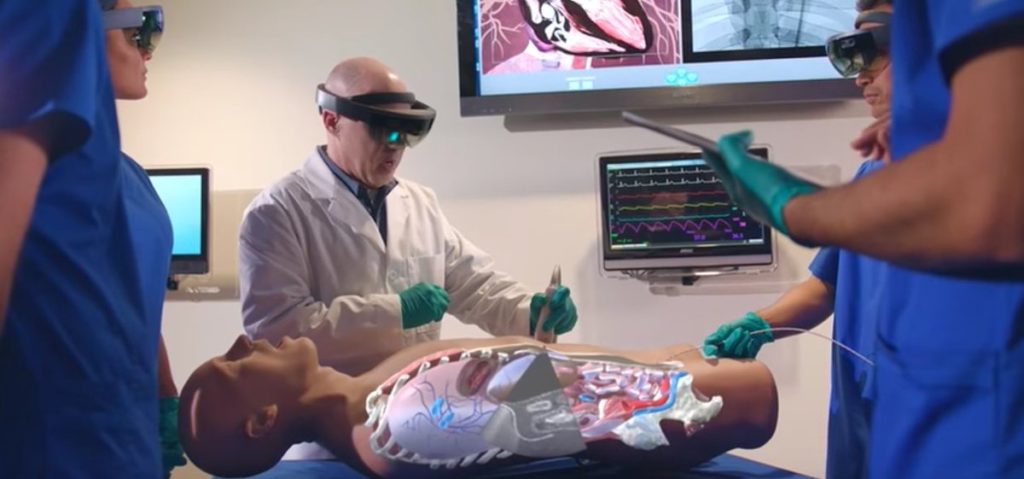
Augmented Reality benefits in medicine
One of the technologies that can have the biggest impact on the healthcare system, in an effective and beneficial manner, is without a doubt Augmented Reality in medicine. Let’s discover its potential in this complex field
Augmented Reality shouldn’t be seen as some future distant application. Nowadays it is already used in various fields, from sports to mechanical industry.
With regards to medicine, it has been introduced in this sector, but not yet adopted at full scale worldwide. Augmented reality in medicine is the perfect health ally.
A clear technological advancement has been made in the realization of detailed real-time images. Surgeons have many anatomical data to analyze thanks to pictures, but usually they are projected on displays in 2D formats.
With AR, the surgeon could operate and at the same time, without looking away at the monitor, analyze a 3D model of the patient. Now, imagine this photos associated to algorithms able to communicate information on the vitals of the sick person and forecasting every possible variable. You will understand that the potentials of augmented reality in medicine are infinite!
With the maturation of tech, it doesn’t seem far fetched to imagine nerves, tendons, arteries and tumors highlighted on a 3D model that can guide the hand of the surgeon. “You look at the leg and essentially see inside of it,” says Dr. Philip Pratt, a medical research fellow at Imperial College. “You see the bones, the course of the blood vessels, and can identify exactly where the targets are located.

AUGMENTED REALITY IN MEDICINE: OUTSIDE THE OPERATION ROOM
The potential for medical training is enormous and not yet fully exploited.
There are patient’s simulations, through AR and VR, that are a great basin of possible experiences for doctors and would-be docs. In these cases it is possible to analyze and try cures and new techniques without running any risk for the patient.
Furthermore, another important evaluation should to be made. In this simulation there is the chance to deal with a broad spectrum of diseases, syndromes and any imaginable variable without waiting for them to appear in a fortuitous way.
Augmented Reality in medicine also makes education and training engaging and immersive, so that the learned concepts stick easier into memory.
Switching to daily tasks, we can imagine the use of AR in the most various cases, for example:
- Doctors supported and guided through diagnosis.
- Nurses aided to spot veins more easily.
- Patients can explain in a more accurate way their symptoms.
- Close defibrillators can be localized and used correctly.
- Mothers can collaborate with the doctor to diagnose the problems of their kids through visors.
- Pharma companies can develop innovative systems to promote new cures and drugs.

THE BENEFITS OF AR: SOME EXAMPLES
How convenient would it be for the doctor to obtain information on probable allergies, interactions between different drugs and perhaps the blood type of the patient without having to deflect the gaze from him?
This would help also the patient to feel “more human” and not just like a problem to be dealt with. Lastly, the AR medicine is used to bring patients to be able to fully understand the cures and the treatments to undertake. The patient-physiotherapist relationship for rehab and long term cases receives many advantages. The basic principle behind this use of AR is that, thanks to a tracked demonstration of the movements of the trainee, patients are able to improve and refine their own moves in a more effective way. This happens, naturally, even in a remote situation, simply staying at home. We can finally affirm that AR will transform medical care by improving precision during operations, reducing medical errors, and giving doctors and patients a better understanding of complex medical problems.
Do you want to learn more about high-tech? Read
Do you want to start you project in AR? Contact us